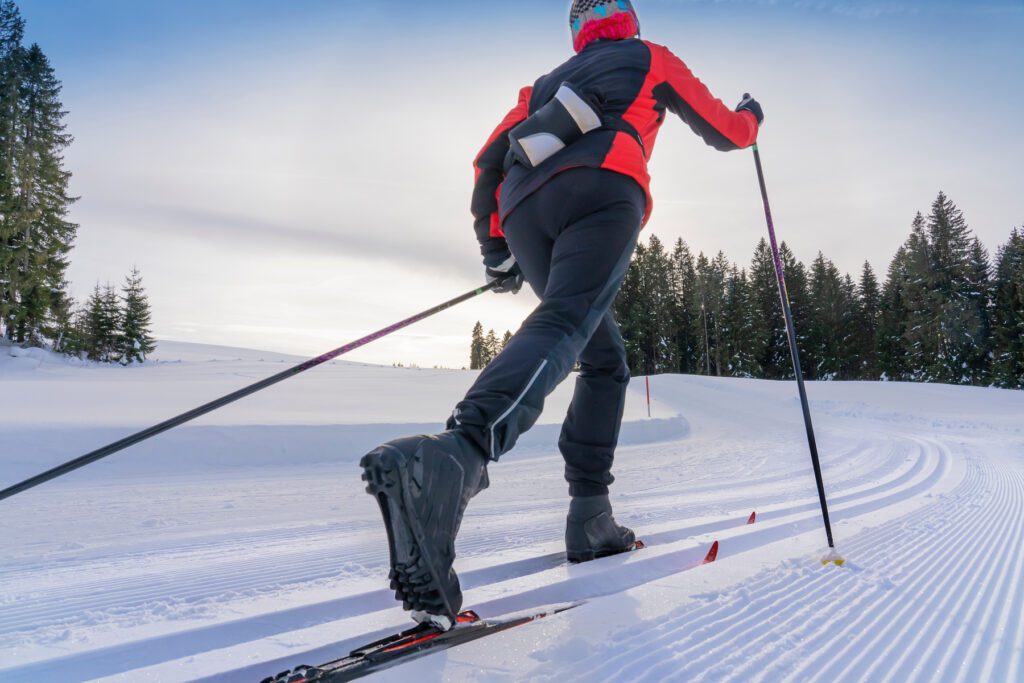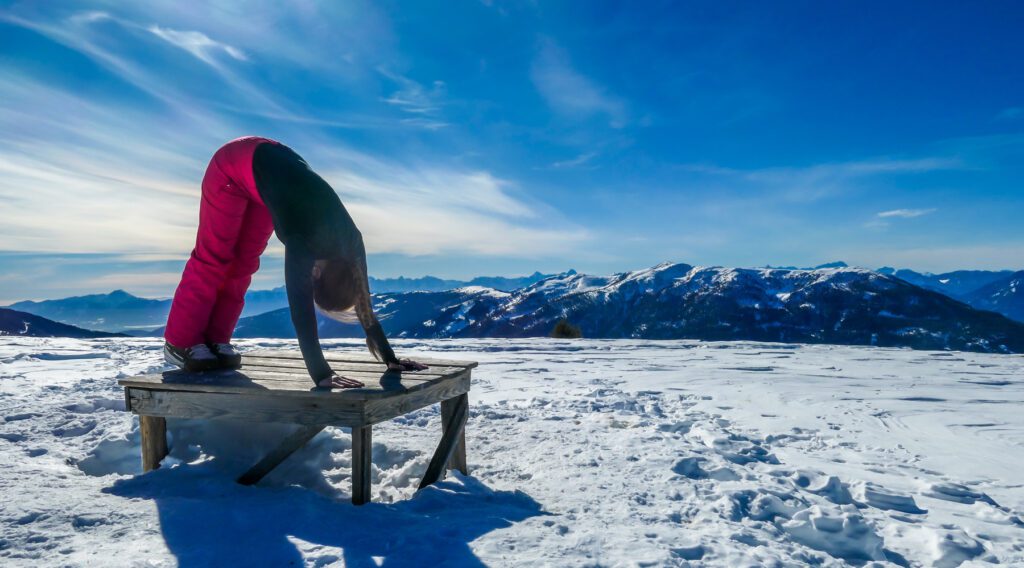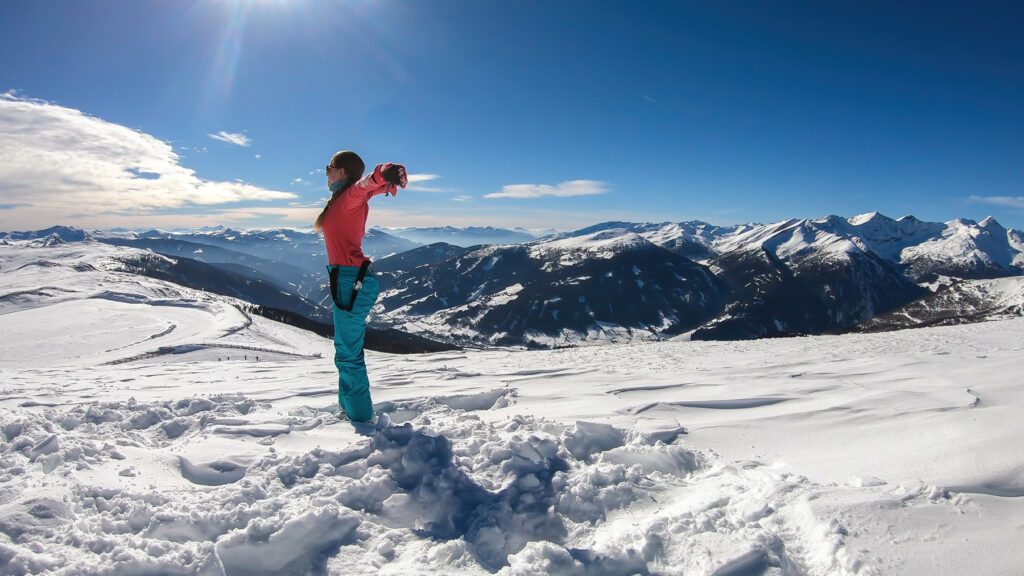How to Stay in Ski Shape This Summer
You should be in good shape to get the most out of your ski vacation. First, you don’t want to be out of breath on your first run. Second, and most importantly, you want to avoid any harm. After all, you want to look good in that ski gear. If you need to adjust your body a little before heading uphill this season, here are some tips to help you stay in shape while skiing or snowboarding.

General Fitness Tips
The great thing about skiing and snowboarding is that you don’t need six packs to be good at it. A general level of cardiovascular and physical fitness is sufficient. When it comes to ski vacations, you want to build specific muscles before your trip. Skiing and snowboarding can be very strenuous and use muscles that are not used regularly in everyday life. If you schedule some time at the gym in the weeks leading up to your ski vacation, you can prepare yourself for a few days of skiing.
Hit the Gym
At the gym, there are a few key areas to focus on. First, of course, the legs. Don’t skip the leg day if you want to enjoy your time on the slopes. Skiing can quickly tire your legs if you don’t build muscle and stamina. A treadmill, stationary bike, or elliptical machine is an easy starting point for building leg strength in the gym. Specific exercises for quads, glutes, and hamstrings are also good.
Know Your Ski Squats
Your hamstrings (called “quads”) get a good workout while skiing, so it’s a good idea to work them out before you start skiing. You’ll use your squats to tackle big hits and other bumps, change direction, and make turns on hills. One of the best ways to build quads is with squats. Here are some of the most popular squats:
Basic Squats
Start with bodyweight squats and work up to barbell squats. Front squat with one dumbbell in each hand, then work your way up to the sumo cup squat for a real leg burn.
Squat Jumps
Squat down with your thighs parallel to the ground, then jump into the air, landing lightly on your feet. Aim for four sets of four with a short rest between each set. Add weight to each hand as you progress.
Wall Squats
No weights are involved here. Stand with your back against a solid wall and crouch. If you can, stay in this position and feel the burn. Do 2-4 wall squats, resting in between for a good workout.
It is recommended to start with lightweight workouts and increase your weight. Start with weights light enough to perform multiple repetitions and maintain good form and posture. The goal is to do 20 reps with one weight, then move on to the next when you feel comfortable. From there, keep lifting heavier weights until you reach your goal. As you build muscle, add enough weight to make lifting difficult, and repeat at that weight for six to eight reps.

Ski Lunges and Step Workouts
Stepping is an easy way to exercise your leg muscles. Find a bench or gym and get down on one leg and then on the other. Descend slowly, always keeping your form. Try to climb to a higher crate or bench. From there, you can progress to the jump, where you jump from two feet onto a crate. Most gyms have larger special jump boxes. This is a great way to build leg strength and improve vertical jumping.
Like squats, lunges can increase your stamina on the mountain. Start with the back lunge, then progress to the lunge and master the walking lunge. From there, you can add dumbbells or kinks to your workout.
First, stand with your feet together and step forward with one leg. Bend so that the front legs form a right angle, and the back legs almost touch the floor. These are great for building hip and core strength. The lunge is excellent for snowboarders because the rider can stand as if on a board and step into the side lunge, then switch left and right to build strength and balance.
Ski Hamstring Training
You use many different muscles to go downhill. It is essential to train your legs, hamstrings, and core strength in the weeks leading up to your ski vacation.
One of the best ways to prevent a severe knee injury like a ruptured cruciate ligament is to have strong hamstrings. Make sure your workout includes a healthy dose of hamstring work. Several machines in the gym can stretch your hamstrings well. It’s also important to work them out vigorously in your stretching routine. Start with light weights and work your way up to your weight before adding enough weight to make it more challenging.
Building Core Strength
The second focus of a ski vacation is to build core muscles. Skiing or snowboarding puts a lot of stress on your core muscles. A strong core helps navigate turns and maintain balance.
Planks are a great way to build core strength. Lie flat on the floor and push your hips up, resting only on your forearms and toes. Your body should form a straight line parallel to the floor. Try to hold this position for 60 seconds without letting your hips sink.
Outdoor Activity
Gym membership is optional and not required. The first few months of ski season are the best time to get outside. Summer activities like swimming, softball/baseball, basketball, tennis, golf, and long-distance running are great ways to stay in shape during the warmer months. Autumn is the best time to exercise your leg muscles for biking and sightseeing excursions. Spending time outdoors is much more fun than an entire summer or fall at the gym.

Try Ski Yoga
Yoga is more than just discovering your inner chi. Done right, yoga can be an intense muscle-building experience. Yoga improves flexibility and balance, which are very important in skiing. Also, yoga is very breath-focused, which comes in handy when skiing at 10,000 feet or higher. Breathing evenly helps you maintain muscle flexibility and focus, so you don’t injure yourself.
There are many different yoga practices, so do research when choosing one. Many yoga studios offer daily impromptu classes where you can stop by and incorporate exercise into your schedule.
Eat Healthy
Changing your diet is another way to lose excess weight to achieve your goals. Again, there are a million dietary options, so take the time to do your research when choosing a meal plan. We recommend a balanced diet and healthy food. It all comes down to personal choice and what will best achieve your fitness goals.